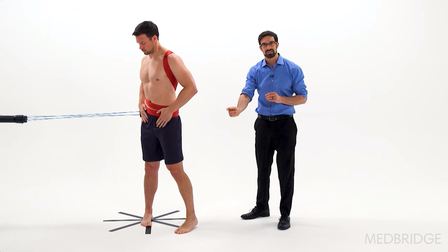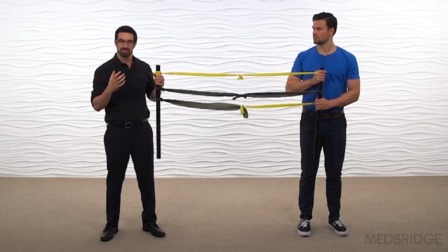This continuing education course is hosted on the Medbridge platform. It will utilize the movement system as a framework to assess the biomechanics of swimming. You will learn how to analyze the four common swim strokes: freestyle, butterfly, breaststroke, and backstroke. You will then advance your movement assessment skills by learning how to integrate swim stroke assessment in the clinical environment. Based on your movement observations and biomechanics knowledge, you will then learn how to classify movement dysfunction and provide swim-specific treatments to correct inefficient movement.
Description
Chapters & Learning Objectives
1. Swimming Introduction and Freestyle Stroke
In this chapter, Dr. Vagy will teach you swimming injury demographics, gender and anthropometric differences, training volumes, and the etiology of swimming injuries. You will then learn the biomechanics of the freestyle swim stroke and the common compensations during the pull-through and recovery phases. Integrate manual symptom modification procedures during the swim stroke to decrease the swimmer’s pain and improve their mechanics.

2. Butterfly
In this chapter, Dr. Vagy introduces the key phases of the butterfly swim stroke. He identifies common compensations that can lead to tissue breakdown and movement corrections that reduce the likelihood of injury. You will learn clinical assessments to improve the coordination of the lower and upper extremities during the stroke and specific thoracic mobilizations that can improve stroke efficiency.

3. Breaststroke
In this chapter, Dr. Vagy introduces the key phases of the breaststroke swim stroke. He identifies common compensations that can lead to tissue breakdown and introduces assessment and treatment strategies that reduce the likelihood of injury. You will learn how to utilize concepts of hip mobility and muscle performance in sport-specific angles to assess and treat lower quarter pathology during the whip kick.

4. Backstroke
In this chapter, Dr. Vagy introduces the key phases of the backstroke swim stroke. He identifies common compensations that can lead to tissue breakdown and movement corrections that reduce the likelihood of injury. He introduces the concept of relative flexibility, how it can influence the biomechanics of the swim stroke, and how to effectively treat this impairment. You will learn how to assess and treat muscle performance deficits in the swimmer’s core by placing them in swim-specific positions on the land.






